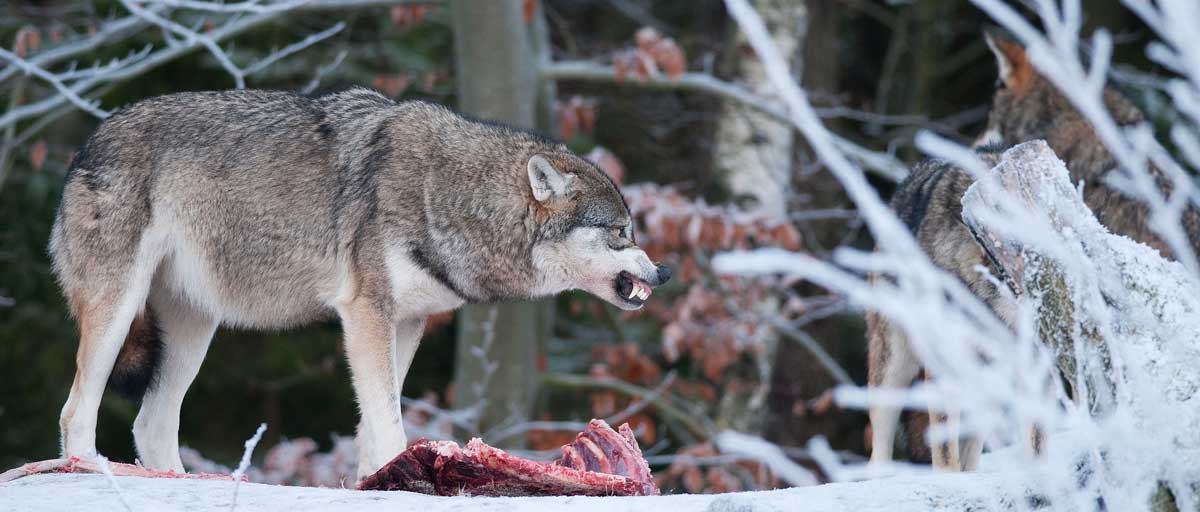
A new study shows that Norway has not taken sufficiently into account opposing interest when implementing the Large Carnivore agreement; a policy arrangement for ensuring both sustainable carnivore populations and active and viable pastoral communities. Photo: I. Petterson/Azote
Bildtext får vara max två rader text. Hela texten ska högerjusteras om den bara ska innehålla fotobyline!
Conservation and farming
Between a wolf and a safe graze
Norway struggles to appease both environmentalists and farmers on carnivore protection and pastoral grazing
- Study looks at trade-offs from a policy objective agreed in 2011 to ensure both sustainable carnivore populations and active and viable pastoral communities
- Decentralization has backfired because of tension between parties
- Authors suggest a more open acknowledgement of the trade-offs to create more innovative encounters and solutions
Norway is associated with many things, spectacular nature coupled with remote but idyllic farms is one of them. But behind the picturesque image there is a struggle to protect local farmers’ animals while adhering to international commitments to protect populations of carnivores such as wolves and bears.
Norway has explicit policies to do both.
Decentralization backfired
In a study recently published in the journal Pastoralism, centre PhD student Diego Galafassi with colleagues from two universities in Norway have looked at the many trade-offs that arise from such policies.
Specifically they look at the challenges unfolding from the two-fold policy objective stated in the Large Carnivore Agreement; a policy arrangement for ensuring both sustainable carnivore populations and active and viable pastoral communities.
An important part of the agreement is to decentralise the management authority to a regional level thus facilitating a more efficient dialogue between parties. However, this has backfired because the tension between local farmers and environmentalists is too high to ensure a constructive dialogue between them.
The consequences are more trade-offs than win-wins for both parties.
”There are clear weaknesses in current governance instruments on how to manage the relation between grazing of sheep and reindeers and the movement of carnivores such as wolves and bears"
Diego Galafassi co-author
A close but deadly interaction
In their study, Galafassi and his colleagues looked at how these trade-offs surface in Nordland, a region in the northern part of Norway bordering Sweden along a north-south gradient at around 500 km at the eastern side of the country. In this region, carnivores roam vast areas and migrate across the Norwegian and Swedish border when habitats are available. This causes close and often deadly interaction between livestock and carnivores. Every season, some 130,000 sheep and 80,000 reindeer disappear.
Due to the expansion of grazing areas, large carnivores that historically inhabited mountain regions had almost been eradicated in Norway by the end of the 19th century. However, international conventions have since the 1960s helped restore and even increase populations of large carnivores. Thus, the emerging picture is a conservation success story, but not everyone is happy.

Salten region in Nordland, northern Norway. Source: Marc Girard, Université de Montréal
Fragmented and hostile dialogues
The agricultural sector is highly politicized in Norway and actors within the pastoral sectors interact across governmental departments regarding carnivore management. Although all political parties in the Norwegian parliament settled on the Large Carnivore Agreement in 2011, it falls short in realistically reconciling different interests, so the conflict remains.
The study shows that opposing interests have not been taken sufficiently into account when implementing the agreement. On a local level, dialogue is fragmented and even occasionally hostile. Conservationists do not attend regional planning meetings and organizing committees are dominated by farmers’ representatives.
”There are clear weaknesses in current governance instruments on how to manage the relation between grazing of sheep and reindeers and the movement of carnivores such as wolves and bears,” Galafassi says.
Co-author Camilla Risvoll, researcher at Nordland Research Institute, adds that ”The government attempted to reconcile the interests of conservation and local users by decentralizing management authority of this complex dilemma to the regional level. However, this process has proved very challenging because management instruments on a regional level are not able to make the parties go beyond their conflicting views.”
More often than not, actor groups feel they need to defend and protect their practices rather than being able to spend the time working towards solutions.
Co-author Gunn Elin Fedreheim from the Arctic University of Norway, points out that essentially the Large Carnivore Agreement brings to the surface but does not solve the difficulty of keeping grazing sheep and reindeers in safe distance from each other. For instance, zoning maps for grazing do not take into account the movements of carnivore populations and compensation schemes do nothing to prevent the increasing predation on domestic animals.
“This neglect reveals a clear mismatch between governance and ecosystem dynamics,” she explains.
Talk about trade-offs, not win-wins
In the search for more integrative solutions, the authors suggest a more open acknowledgement of the trade-offs. This means revealing the inherent trade-offs with the hope that it can create more innovative encounters and solutions both in the governance sphere and in local communities’ practices.
The Large Carnivore Agreement assumes both protection of carnivores and sustainable local livelihoods can be pursued. However, this renders local communities vulnerable and neither cultural nor biological diversity can prosper under the current governance regime, the authors argue.
”Making trade-offs explicit and salient to policymakers is essential for stimulating more innovative solutions and broader participation,” they conclude.
Risvoll, C., Gunn Elin Fedreheim, and Diego Galafassi. 2016. “Trade-Offs in Pastoral Governance in Norway: Challenges for Biodiversity and Adaptation.” Pastoralism, February. Pastoralism, 1–15. doi:10.1186/s13570-016-0051-3
Diego Galafassi is a PhD student at the centre. In his PhD he is exploring how transformations can be studied from a social-ecological network perspective. His current research seeks to understand networked dependencies and how they define network configurations.






